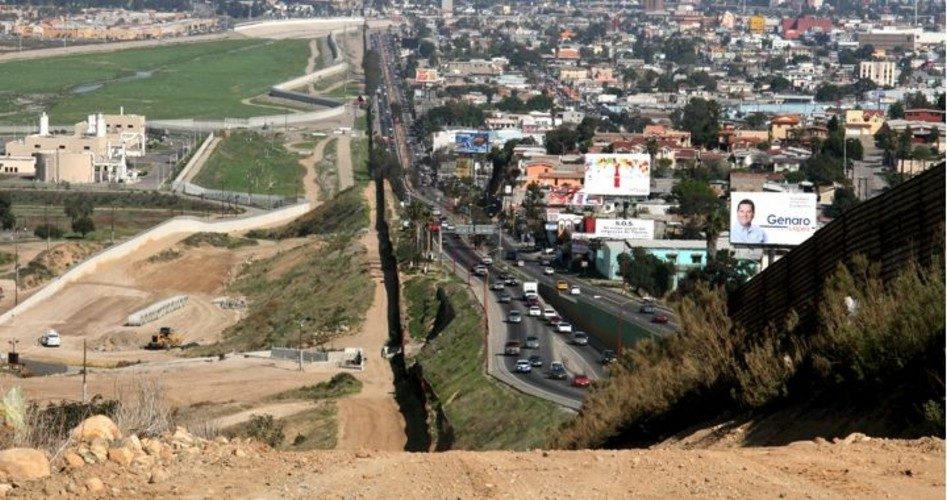
On paper, the study entitled “The Cost of a Border Wall vs. the Cost of Illegal Immigration,” published by the Center for Immigration Studies (CIS), seems to make sense:
If a [southern] border wall stopped a small fraction of the illegal immigrants who are expected to come in the next decade, the fiscal savings from having fewer illegal immigrants in the country would be sufficient to cover the costs of the wall.
There are many assumptions built into Camarota’s analysis, but the big one not mentioned is this: Although those alleged savings would reduce the tax burden on citizens living close to the border, why should they (once relieved of some part of that burden) be forced to turn around and use those savings to pay for the wall?
Camarota’s analysis, however, is useful in many ways, including learning just how much illegal immigration is costing American taxpayers every year. He uses calculations from the National Academies of Sciences, Engineering, and Medicine to determine that each illegal border crosser creates “an average financial burden [on American taxpayers] of approximately $74,722 during their lifetimes, excluding any costs for their U.S.-born children. If a border wall stopped between 160,000 and 200,000 illegal crossers (9 to 12 percent of those expected to successfully cross in the next decade), the fiscal savings would equal the $12 to $15 billion cost of the wall.” (Note: Because of the method by which the financial burden is figured, the lifetime fiscal cost of each illegal is likely much higher, as CIS stated.)
The startling conclusion isn’t that the welfare cost savings is enough to pay for the wall. It’s the enormous costs being borne by the American taxpayer because of illegal immigration. Assuming that Camarota is anywhere close ($75,000 per illegal over their lifetimes, not counting their children) and if the number of illegal crossers continues at the rate of 170,000 per year (2015 numbers), the net drain on Americans comes to a staggering $12.75 billion every year. If their children’s “drain” is included, that number jumps to $21 billion a year. That is $210 billion in 10 years, borne by Americans.
In the real world, the wall would be built with American taxpayers’ money, following Trump’s January 25 executive order: Border Security and Immigration Enforcement Improvements. “It is now the policy,” according to the executive order, “of the executive branch to … secure the southern border of the United States through the immediate construction of a physical wall on the southern border, monitored and supported by adequate personnel so as to prevent illegal immigration, drug and human trafficking, and acts of terrorism.” But the idea of the study is that because of the wall, Americans’ future welfare outlays will be lower — so we’d have spent the money anyway.
John Kelly, secretary of the Department of Homeland Security (DHS), was directed “immediately” to start planning, designing, and constructing the “physical wall” using “appropriate materials and technology” for the project.
As far as costs are concerned, the executive order was vague. Kelly was ordered to “identify and … allocate all sources of Federal funds” for the wall’s construction. Some could come out of the DHS budget of $41 billion. Some could be borrowed, with the permission of Congress. Some could come from the states most affected. Some could come from a “border tax.” Some could come out of the foreign aid the United States gives Mexico every year. Some could come from busting up the drug cartels and freezing their assets. Some could come from funds illegals already in the states are sending back to their families in Mexico.
There are other considerations missed by Camarota. As U.S.-side enforcement of immigration laws increases, an unknown number of those here illegally will “self-deport” (putting local Mexican municipalities under pressure to repatriate, reabsorb, and re-employ them locally).
What if Camarota is wrong and the wall stops many more crosssers — 50 or 75 or 90 percent? In that case, the welfare cost savings skyrocket into the many hundreds of billions of dollars. Those dollars saved would have a positive impact on America’s economy, increasing tax revenues to Washington that can repay the costs of building it.
What is safe to say is that the study reveals the enormous costs already being borne by American taxpayers by illegal immigration, and just how costly Americans’ generosity and patience would be in the future without stopping illegal immigration.
An Ivy League graduate and former investment advisor, Bob is a regular contributor to The New American magazine and blogs frequently at LightFromTheRight.com, primarily on economics and politics. He can be reached at [email protected].


